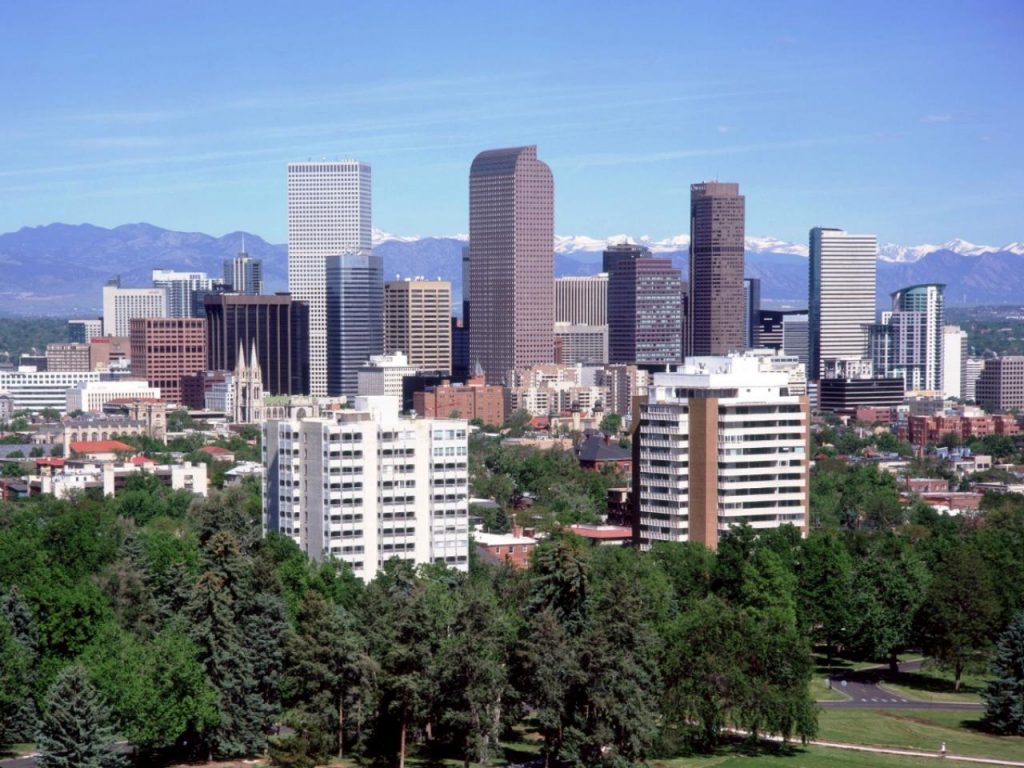Denver’s housing market is seemingly stuck at a crossroads. Low inventory is causing home prices and rents to climb upwards, putting additional financial pressure on low-income workers and contributing to the city’s growing homeless population. Meanwhile, the city’s office vacancy rates remain among the nation’s highest, and the chances of converting these underused buildings into new housing units seem slim because many office layouts are incompatible with residential uses.

So, how should Denver solve these big problems? New research from global architecture firm Gensler and The Pew Charitable Trusts suggests that city leaders should start by thinking small.
Gensler and Pew found that Denver is one of three cities where converting office buildings into co-living apartments could reduce housing costs. This concept, also known as Flexible Co-Living, is a new approach to single-room occupancy units, like motels, which have largely disappeared from the Denver market since the 1960s and 1970s.
The idea works like this. Developers would create private co-living spaces that resemble college dormitories between 122 sq. ft. and 208 sq. ft. in size surrounding the edge of an underused office building like The Lincoln Crossing Tower at 1775 Sherman St. At the center of each floor would be shared amenities like a kitchen, living room, and laundry facility. The research suggests this approach could yield up to 40 single units and four double units on each floor.
This development approach could rapidly expand Denver’s available housing supply and create more affordable units for the city’s lowest-income earners. The 73-page research report says the micro-units could be rented for between $600 and $900 per month, which is in line with the budgets of people earning between $27,000 and $45,000 per year. For comparison, Denver’s average rent for a more than 840 sq. ft. apartment was more than $2,000 per month in October, according to RentCafe.
Converting offices to micro-apartment towers could also make many underused buildings economically productive again. Data from CoStar shows 35 buildings in Denver’s Central Business District are at least 30% vacant. Meanwhile, competition from suburban submarkets like Lone Tree continues to draw businesses away from Denver’s office buildings, leaving downtown with an oversupply of vacant buildings, the research says.
Building these co-living spaces is also estimated to cost between $234 and $277 gross sq. ft., which is about 15% less than traditional office-to-residential conversion projects, according to the research. Lowering construction costs for this kind of project would allow more units to be reserved as either dedicated affordable housing or supportive housing for people exiting homelessness. Denver’s homeless population reached a record 9,977 people in 2024, accounting for a more than 10% increase year-over-year, according to the latest snapshot count.
The research adds that Denver’s building code, zoning code, affordable housing regulations, and green energy codes all support this kind of development. There also appears to be political support for adding new housing types to Denver’s market.
“Initial conversations suggest that there is notable local political will to encourage new housing typologies, along with other solutions to address housing affordability and rising homelessness and housing insecurity,” the research says.
Even though the philosophy behind these projects is strong, there are still some practical issues to overcome before an underused office building can be converted.
One glaring issue for developers is finding the financing for these conversion projects, which the research suggests could come from expanding the boundary for Denver’s Downtown Development Authority. The DDA is a special district that was created in 2008 to support revitalization efforts downtown, such as the 2014 Union Station renovation.
Denver Ballot Issue 6A could expand the boundary of the DDA to encompass parts of the Ballpark and North Capitol Hill neighborhoods. A vote favoring 6A would allow Denver to take on about $750 million in debt for revitalization projects without raising taxes. Total repayment costs could be as high as $847 million.
Denver Mayor Mike Johnston told Denver7 that this investment could end downtown’s “doop loop.”
There are also permitting issues that Denver is still working through. Data from Community Planning and Development’s permit dashboard shows the average approval time for major commercial projects, or those valued at $1.5 million or more, is 286 days. That includes the time planners take to review a project, provide feedback, and allow applicants to make revisions before a project is approved.
In 2023, Denver launched its Upper Downtown Adaptive Reuse Pilot Program to facilitate office-to-residential conversion activity. The pilot program included an assigned project coordinator who helps developers navigate the multi-agency permitting process, an expedited application process, and local incentives for the development.
However, the pilot has generated limited results thus far. A CPD spokesperson confirmed to the Colorado Times Recorder that just three of the top 29 buildings identified as candidates for conversion under Denver’s adaptive reuse survey are actively being converted. Those buildings are the Petroleum Building at 110 16th St., the Symes Building at 820 16th St., and 475 17th St., a 16-story office building that Revesco Properties is converting into 210 apartments. Construction at 475 17th St. is estimated to start in Q4 2025 and could take about 14 months to complete.
After this story was published, Mayor Johnston’s press secretary provided the Colorado Times Recorder with the following statement:
“Mayor Johnston is committed to expanding affordable housing opportunities while revitalizing downtown Denver to create a family-friendly, thriving, and diversified downtown. With no impact on taxes, the DDA expansion would provide a historic opportunity to invest in and support our downtown, including adding new affordable units, expanding open space, and attracting new businesses and employers. We are always open to exploring innovative solutions to our toughest challenges and will continue to look at all available options.”




